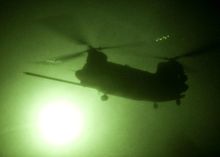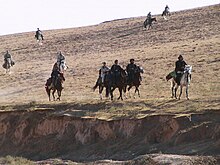
The United States Army Special Forces (SF), colloquially known as the "Green Berets" due to their distinctive service headgear, is the special operations branch of the United States Army. Although technically an Army branch, the Special Forces operates similarly to a functional area (FA), in that individuals may not join its ranks until having served in another Army branch.
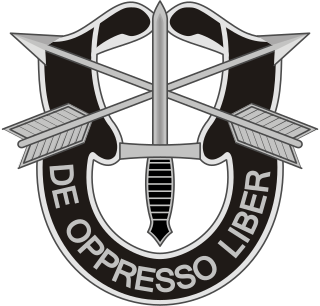
De oppresso liber is the motto of the United States Army Special Forces.

Shortly after the September 11 attacks, the United States declared the war on terror and subsequently led a multinational invasion of Taliban-ruled Afghanistan. The stated goal was to dismantle al-Qaeda, which had executed the attacks under the leadership of Osama bin Laden, and to deny Islamist militants a safe base of operations in Afghanistan by toppling the Taliban government. The United Kingdom was a key ally of the United States, offering support for military action from the start of the invasion preparations. The American military presence in Afghanistan greatly bolstered the Northern Alliance, which had been locked in a losing fight with the Taliban during the Afghan Civil War. Prior to the beginning of the United States' war effort, the Taliban had seized around 85% of Afghanistan's territory as well as the capital city of Kabul, effectively confining the Northern Alliance to Badakhshan Province and smaller surrounding areas. The American-led invasion on October 7, 2001, marked the first phase of what would become the 20-year-long War in Afghanistan.

Following the terrorist attacks of September 11, 2001, several nations took on Al-Qaeda and the Taliban during Operation Enduring Freedom (OEF) in Afghanistan. OEF was the initial combat operations starting on 7 October 2001, in the wake of the 11 September attacks on the United States, and during 2002 and 2003.
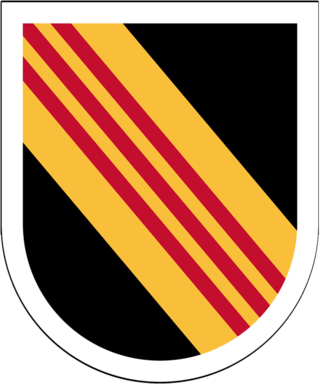
The 5th Special Forces Group (Airborne) (5th SFG (A), 5th Group) is one of the most decorated active duty United States Army Special Forces groups. The 5th SFG (A) saw extensive action in the Vietnam War and played a pivotal role in the early months of Operation Enduring Freedom. 5th Group is designed to deploy and execute nine doctrinal missions: unconventional warfare, foreign internal defense, direct action, counter-insurgency, special reconnaissance, counter-terrorism, information operations, counterproliferation of weapon of mass destruction, and security force assistance.

The fall of Mazar-i-Sharif in November 2001 resulted from the first major offensive of the Afghanistan War after American intervention. A push into the city of Mazar-i-Sharif in Balkh Province by the United Islamic Front for the Salvation of Afghanistan, combined with U.S. Army Special Forces aerial bombardment, resulted in the withdrawal of Taliban forces who had held the city since 1998. After the fall of outlying villages, and an intensive bombardment, the Taliban and al-Qaeda forces withdrew from the city. Several hundred pro-Taliban fighters were killed. Approximately 500 were captured, and approximately 1,000 reportedly defected. The capture of Mazar-i-Sharif was the first major defeat for the Taliban.

The 3rd Special Forces Group (Airborne) – abbreviated 3rd SFG(A) and often simply called 3rd Group – is an active duty United States Army Special Forces (SF) group which was active in the Vietnam Era (1963–69), deactivated, and then reactivated in 1990. 3rd Group is designed to deploy and execute nine doctrinal missions: unconventional warfare, foreign internal defense, direct action, counter-insurgency, special reconnaissance, counter-terrorism, information operations, counterproliferation of weapon of mass destruction, and security force assistance. The 3rd SFG(A) was primarily responsible for operations within the AFRICOM area of responsibility, as part of the Special Operations Command, Africa (SOCAFRICA). Its primary area of operations (AO) is now Africa as part of a 2015 SOCOM directive but 3rd Group has also been involved in the Caribbean and the Greater Middle East. The 3rd SFG(A) has seen extensive action in the War on Terror and its members have distinguished themselves on the battlefield in Afghanistan.

The 19th Special Forces Group (Airborne) (19th SFG) (A) is one of two National Guard groups of the United States Army Special Forces. 19th Group—as it is sometimes called—is designed to deploy and execute nine doctrinal missions: unconventional warfare, foreign internal defense, direct action, counter-insurgency, special reconnaissance, counter-terrorism, information operations, counterproliferation of weapon of mass destruction, and security force assistance. Headquartered in Bluffdale, Utah, with detachments in Washington, West Virginia, Ohio, Rhode Island, Colorado, California and Texas, the 19th SFG(A) shares responsibility over Southwest Asia with the 5th Special Forces Group (Airborne), and the Pacific with the 1st Special Forces Group (Airborne). Company A, 2nd Battalion is one of several National Guard units with colonial roots.

Sergeant Major Brendan W. O'Connor is a retired Special Forces medical sergeant in the United States Army. On April 30, 2008, he was awarded the Distinguished Service Cross for his heroic action in Afghanistan. The DSC is the nation's second highest award for valor and this was only the second time since the Vietnam War that the medal was awarded.
The Battle of Tarinkot took place in 2001 during the War in Afghanistan. On November 14, 2001, ODA 574 and Hamid Karzai inserted into Uruzgan Province via 4 MH-60K helicopters with a small force of guerrillas. In response to the approach of Karzai's force, the inhabitants of the town of Tarinkot revolted and expelled their Taliban administrators. Karzai traveled to Tarinkot to meet with the town elders. While he was there, the Taliban marshaled a force of 500 men to retake Tarinkot. Karzai's small force plus the American contingent, which consisted of US Army Special Forces from ODA 574 and their US Air Force Combat Controller, Tech Sergeant Alex Yoshimoto, were deployed in front of the town to block their advance. Relying heavily on close air support directed by Yoshimoto, the American/Afghan force managed to halt the Taliban advance and drive them away from the town.
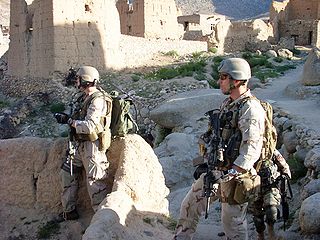
The Battle of Shok Valley, also known as Operation Commando Wrath, was a joint U.S.-Afghan raid designed to kill or capture Gulbuddin Hekmatyar, the leader of Hezb-e-Islami Gulbuddin (HIG) in the Shok Valley of Nuristan Province of Afghanistan on 6 April 2008. Ten soldiers belonging to U.S Army special forces and their combat cameraman were awarded the Silver Star for bravery, the greatest number of such awards for a single battle since the Vietnam War. In 2018, Special Forces medic Ronald J. Shurer's Silver Star was upgraded to the Medal of Honor for his actions during the battle. In 2019, Special Forces weapons sergeant Matthew O. Williams's Silver Star was upgraded to the Medal of Honor for his actions during the battle. In addition SrA Zachary Rhyner, ODA 3336's attached Air Force Combat Controller, was awarded the Air Force Cross.
Operation Moshtarak, also known as the Battle of Marjah, was an International Security Assistance Force (ISAF) pacification offensive in the town of Marjah, Helmand Province, Afghanistan. It involved a combined total of 15,000 Afghan, American, British, Canadian, Danish, and Estonian troops, constituting the largest joint operation of the War in Afghanistan up to that point. The purpose of the operation was to remove the Taliban from Marja, thus eliminating the last Taliban stronghold in central Helmand Province. The main target of the offensive was the town of Marjah, which had been controlled for years by the Taliban as well as drug traffickers.

Mark Edward Mitchell was the Acting Assistant Secretary of Defense for Special Operations and Low-Intensity Conflict for the United States Department of Defense for several months during 2019. A retired colonel, Mitchell was the first member of the United States Army to be awarded the Distinguished Service Cross during the War in Afghanistan and was the first to receive the award since the Vietnam War. He received the award in 2003 for his actions during the Battle of Qala-i-Jangi, which took place in late November to early December 2001.

The U.S. Army Special Forces traces its roots as the Army's premier proponent of unconventional warfare from purpose-formed special operations units like the Alamo Scouts, Philippine guerrillas, First Special Service Force, and the Operational Groups (OGs) of the Office of Strategic Services. Although the OSS was not an Army organization, many Army personnel were assigned to the OSS and later used their experiences to influence the forming of Special Forces.
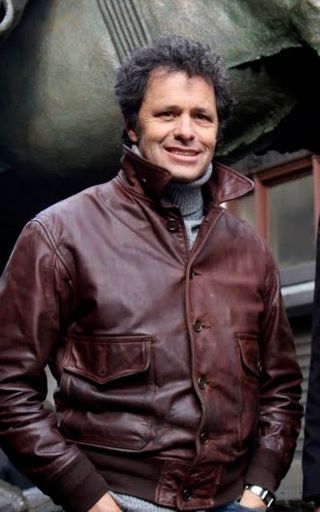
Douwe Blumberg is a bronze sculptor who is most well known for his statue of a special forces soldier on horseback commemorating Special Forces operations in Afghanistan during the opening days of Operation Enduring Freedom. He has received more than 200 commissions and a number of awards since becoming a sculptor in 2000. He attended the University of Southern California and studied at the Idyllwild School of Music and the Arts. He was a horse trainer for 18 years before he became a sculptor.

Liberty Park is a one-acre (0.40 ha) elevated public park at the World Trade Center in Manhattan, New York City, overlooking the National September 11 Memorial & Museum in Lower Manhattan. The park, which opened on June 29, 2016, is located above the World Trade Center's Vehicular Security Center. The St. Nicholas National Shrine is located within the park, as well as Fritz Koenig's The Sphere, the iconic sculpture salvaged from the World Trade Center site. Another statue, America's Response Monument, is also located in the park.
The following lists events that happened during 2015 in Afghanistan.
The following lists events that happened during 2016 in Afghanistan.
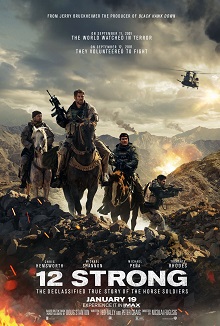
12 Strong is a 2018 American action-war film directed by Nicolai Fuglsig and written by Ted Tally and Peter Craig. The film is based on Doug Stanton's non-fiction book Horse Soldiers, which tells the story of U.S. Army Special Forces sent to Afghanistan immediately after the September 11 attacks. The film stars Chris Hemsworth, Michael Shannon, Michael Peña, Navid Negahban, Trevante Rhodes, Geoff Stults, Thad Luckinbill, Ben O'Toole, William Fichtner, and Rob Riggle.

The 2014 Gaza Valley airstrike was a friendly fire incident that took place in Zabul Province, Afghanistan on 9 June 2014 when five U.S. troops and one Afghan interpreter were killed when a B-1B Lancer bomber inadvertently dropped laser-guided bombs on their position during a firefight with Taliban forces. U.S. and Afghan government forces were in the Gaza Valley area of Arghandab District conducting security operations in advance of the 2014 Afghan presidential elections when they came under attack from Taliban militants, sparking a firefight. An American air controller on the ground requested close air support from a B-1B bomber flying in the vicinity to support a team of soldiers maneuvering on a ridge. The U.S. aircraft dropped two guided bombs on the position, killing the team of Americans and an Afghan soldier.

